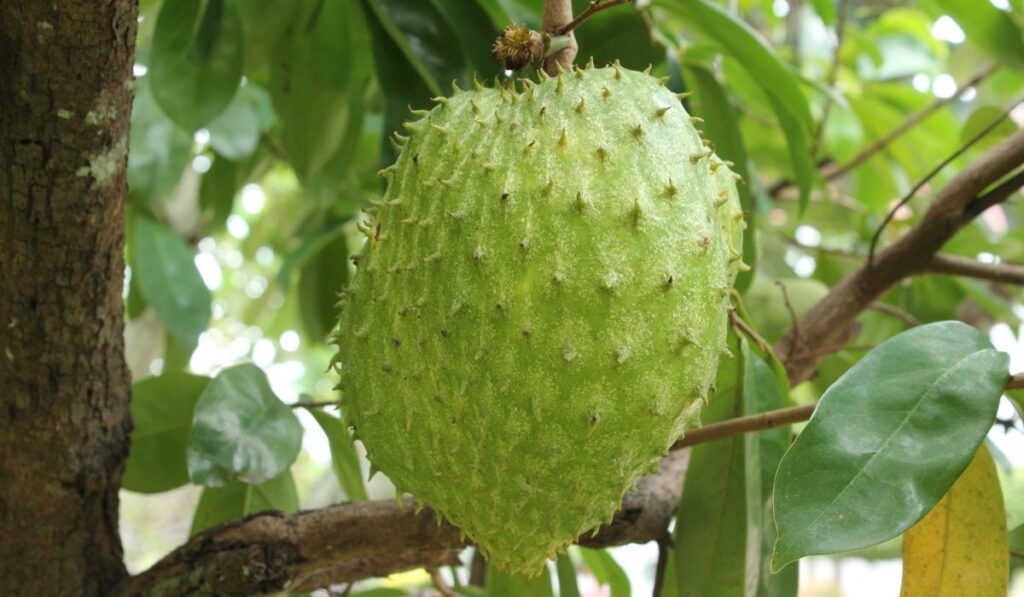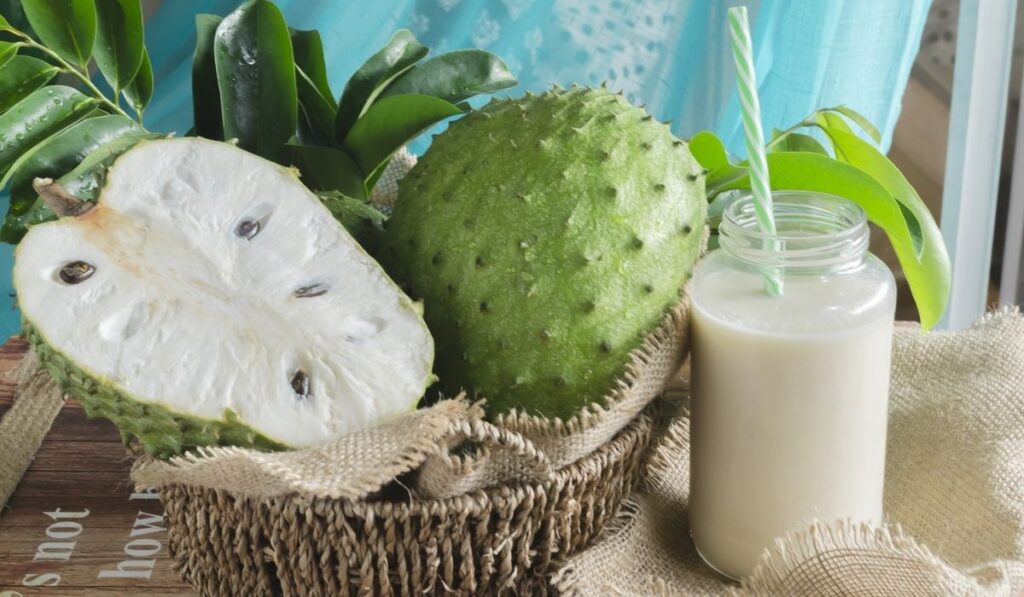Eating seasonal fruit is a great way to expand your diet and gain nutrients you might miss out on otherwise. One of the most unique seasonal fruits is soursop. Don’t worry if you’ve never heard of this fruit; we’ve got you covered.
Soursops are large, oval-shaped fruits with a green exterior covered in spines. Soursops are typically available from June to September and can be enjoyed raw once the seeds are removed. The flavor of a ripe soursop is often described as a combination of strawberries, sour apples, and pineapple.
Soursops have a peculiar flavor profile that’s similar to so many fruits that it’s hard to pinpoint. The fruit is chock full of nutrients, and research is pointing toward great benefits from the fruit. But when can you get your hands on soursop? How do you even cut or enjoy soursop? Read on for everything you need to know.
What Is Soursop?

Soursop, sometimes referred to as graviola, is the fruit of Annona muricata, a variety of trees native to the tropical regions of the Americas and the Caribbean. Soursop belongs to the Annonaceae family, sometimes referred to as the custard apple family.
Soursops are large, oval-shaped, and have a green exterior covered in spines. The fruit can grow up to 8-inches and weigh upwards of 10 pounds.
Soursops have a creamy consistency with a strong flavor. The flavor is often described as a combination of strawberries, sour apples, and pineapple, with a texture reminiscent of a banana.
What Time of the Year Does Soursop Grow?
Generally speaking, Soursops grow from June to September. However, the time of year soursops are best depends on the climate. Different areas have different seasons of ripening. Here are some of the areas and times soursops grow:
- Puerto Rico: March to June (sometimes September)
- Queensland: April to September
- Southern India: June to September
- Mexico: June to September
- Florida: June to September
- The Bahamas: June to October
- Hawaii: Nearly all year, with early crops from January to April and late crops in October or November.
How Do You Cut Open a Soursop?
You might not be familiar with how to cut soursop if you’ve never had one. Soursops look a lot like avocados, and cutting them is quite similar. You can leave the peel on, similar to a watermelon, or take it off with either of the options below.
You’ll want to cut your soursop down the middle lengthwise. You should have two halves in front of you and notice a creamy interior with a few large black seeds. You can use your knife or a spoon to scrape out the black seeds.
Another way you can cut soursop is similar to orange or watermelon slices. After you’ve cut your fruit down the middle lengthwise, you can begin creating slices like a watermelon. You should remove any of the seeds as you come across them. The core of soursop is also edible.
Be sure to remove the seeds and don’t eat them as they’re harmful to humans and can cause severe health complications.
How Do You Eat Soursop?

Soursop is usually eaten raw by slicing the fruit in half and scooping out the flesh with a spoon. However, there are plenty of ways to enjoy this fruit, including in juices, ice creams, smoothies, and more. After removing all the seeds, some popular ways to eat soursop include:
- Eating the fruit raw
- Creating homemade popsicles
- Adding soursop to store-bought or homemade ice cream
- Adding the flesh to smoothies and milkshakes
- Juicing
- Adding the flesh as a topping to yogurt, oatmeal, or chia pudding
- Adding to quick breads, cakes, or other baked goods
You’ll typically find soursops being sold before they’re fully ripe. Ripe soursops have a yellow-green exterior with less prominent spines, indicating they’re reading to be eaten.
The fruit should also have a little give when you press on it. You can store unripe soursop on the counter and store it in the fridge when it’s fully ripened. If you’re having trouble finding ripe Soursop, be sure to consider supplements including soursop extract like the Soursop, Sea Moss and Elderberry Complex (on Amazon), or even shelf-stable juices like this NILO Soursop Juice (also on Amazon).
Conclusion
Soursop is a large and unique fruit with an interesting flavor profile reminiscent of pineapples, strawberries, and sour apples. The fruit has a green-spiny exterior and a fleshy interior, somewhat like a banana. Soursops are packed with nutrients, minerals, and antioxidants.
More research needs to be done, but soursops might help fight against bacteria, inflammation, cancer cells and strengthen the immune system. This fruit is typically available from June to September and is enjoyed raw once the seeds are removed.
